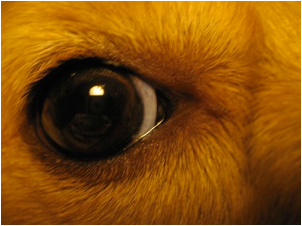Styes on a Dog's Eyelids - Best Pet Home Remedies
 Home Remedies for
Styes on a Dog’s Eyelids: just like people, dogs get styes on their eyelids,
and not only are they unsightly, but they can also be bothersome as they tend
to interfere with a dog’s overall vision and ability to
blink. Because there are several other types of growths that may develop
on a dog’s eyelids, it’s important to see the vet so to know exactly what you
may be dealing with. While dogs are prone to getting styes on their
eyelids, there are several other conditions that may cause similar symptoms,
but require different treatments. The following are just a few possible
causes of unsightly bumps on a dog’s eyelids.
Home Remedies for
Styes on a Dog’s Eyelids: just like people, dogs get styes on their eyelids,
and not only are they unsightly, but they can also be bothersome as they tend
to interfere with a dog’s overall vision and ability to
blink. Because there are several other types of growths that may develop
on a dog’s eyelids, it’s important to see the vet so to know exactly what you
may be dealing with. While dogs are prone to getting styes on their
eyelids, there are several other conditions that may cause similar symptoms,
but require different treatments. The following are just a few possible
causes of unsightly bumps on a dog’s eyelids.
Understanding Meibomian Glands
The rim of your dog’s eyelids are scattered with several small glands known as meibomian glands. In a normal situation, these glands secrete an oily substance that’s responsible for keeping your dog’s eyes nicely moistened. However, at times, these glands may be prone to developing problems such as inflammation which causes the glands to swell and become obstructed by thick secretions. When this happens, un unsightly growth may erupt. Dogs may get styes and chalazions.
Styes occur when a meibomian gland gets infected and present as pimple-like growths on the external edge of the dog’s eyelid margin. Chalazions, on the other hand, are also infections of the meibomian gland, but they tend to present as nodular swellings found on the inner surface of the dog’s eyelid margin, according to Veterinary Vision of Rochester.
Home Remedies for Dog Styes
Because there are several types of growths that may occur on a dog’s eyelids, it’s always best to see the vet to determine exactly what they are so proper treatment can be initiated. It’s important to consider that at times, these eyelid glands may develop tumors which are commonly referred to as “meibomian adenomas” and are commonly found in middle-aged and older dogs. While eyelid tumors sound like bad news, the good news is that about 80 percent of all eyelid tumors found in dogs are of the benign type, according to Zigler Veterinary Professional Corporation. If the pimple-like bump on the dog’s eyelid is actually a stye (also, known as hordeolum), there are some home remedies that can be tried at home.
Here are some of them:
Warm Compresses
A natural, home remedy for comes from veterinarian Dr. Fiona. She suggests getting a soft washcloth, soaking it in warm water and carefully applying it to the dog’s eyelid for about 5 minutes, three times a day. If the dog is calm and collaborative, these warm compresses should cause drainage of the gland which will reduce the swelling and eventually make the unsightly stye on the dog’s eyelid go away. The compresses therefore will expedite the process. However, if the growth gets bigger and and the dog starts keeping the eyes closed or rubs at them, a vet visit is in order.
Artificial Tears
Styes are simply infections often caused by irritants such as bacteria and dead skin cells. Rinsing the dog’s eye may hep flush away any irritants that caused the stye in the first place. A product that can be used to rinse a dog’s eye is artificial tears which are commonly found over the counter. Apply the artificial tears about every 4 to 6 hours, recommends Dr. Loretta. If the warm compresses along with the artificial tears do not cause any improvement over the next few days, it’s time to have the bump examined by a vet.
Stop Don’t Pop!
It may be tempting for some dog owners to want to pop a growth that is found on a dog’s eyelids. It’s best to avoid this at all costs. First, serious injury can occur in a dog who is not collaborative, and second things can get worse by popping. If the growth turns out being a tumor, there is really nothing to pop and any injury to the area may result in a bacterial infection. If the growth is a chalazion, its oily contents may spill into the eyelid and potentially cause a serious localized tissue reaction that can be difficult to treat, warn veterinarians Debra M. Eldredge, Liisa D. Carlson, Delbert G. Carlson, in the book “Dog Owner’s Home Veterinary Handbook
Leaving It Alone
As mentioned, it can be difficult to tell the difference between a stye or a meibomian tumor. Sometimes, the best thing to do is to leave these growths alone. If it’s a stye, it will eventually mature and rupture on its own. If it’s a meibomian gland tumor, it will continue to grow slowly and there’s nothing that can make these types of skin masses go away, other than having them removed by the vet if they get too large and bother the dog. In this case, the vet can remove them through cryosurgery (freezing), laser ablation or traditional surgical excision.
![]() Copyright secured by Digiprove © 2015-2016
Copyright secured by Digiprove © 2015-2016
Share and Enjoy